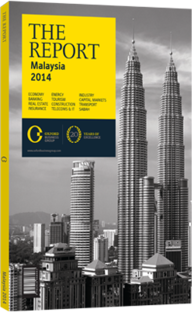OBG talks to Zam Isa, Group CEO, Telekom Malaysia

Interview: Zam Isa
What can we expect from the second phase of the country’s high-speed broadband (HSBB) project?
ZAM ISA: First and foremost, what was committed to the government under the first HSBB public-private partnership programme (HSBB1) has been achieved. HSBB, by definition, delivers speeds of 4 Mbps and above. Now, discussions are ongoing with the government on how best to extend the current agreement for the second phase, HSBB2. As of December 2013, we passed 1.49m ports covering 2.48m premises on the back of 105 exchanges – 64 of them in the Klang Valley. With close to 635,000 customers, this translates to a take-up rate of more than 43%. HSBB2 will cover more exchanges and make more products and services available. Under the proposed agreement, Malaysia can expect an upgrade on as many as 400 exchanges nationwide. As an extension of HSBB1, HSBB2 will convert another 95 exchange areas to a next-generation network over a three-year period. Speeds would increase to 10 Mbps in the city and to 4 -10 Mbps in the suburbs.
How will investment in infrastructure development and new technologies such as 4G long-term evolution (LTE) address spectrum demand?
ISA: Consumers no longer think about who their service provider is; they worry about the device they use, whether it be Samsung, Apple or Blackberry, to access applications and content. Convergence used to be defined through technology, but today I think we should look at it through the lens of the user. LTE is only one of many new technological evolutions for users. Instead of looking to a single technology, users should be looking at high-speed broadband over fibre or mobile. In Malaysia we currently have 3G, 4G LTE and even Wi-Fi, all of which are meant to fulfil users’ expectations.
As for LTE, as mobile operators adopt technologies with higher bandwidth and speeds, they will also need large pipes for backhaul. With the current broadband infrastructure that is in place, mobile operators can expect greater wholesale service on the backhaul.
What plans are in place to close the infrastructure gap between Peninsular and East Malaysia?
ISA: We continue to work with both the government and the Malaysian Communications and Multimedia Commission to bring Sabah and Sarawak up to speed. Once demand and traffic are created, some serious connectivity will be needed between Peninsular Malaysia and East Malaysia. Today there is already a submarine cable system in place, which has gone through a series of upgrades, each time more than doubling the capacity. In the late 1990s, the system started off with a simple capacity of 30 Gbps. Since then, it has been upgraded three times, and today the capacity stands at about 400 Gbps. At the same time, there is a new cable system being planned to connect Sabah and Sarawak across the South China Sea. Once implemented, it will provide bandwidth capacity of 1-2 Tbps.
How are prices and speed being addressed?
ISA: To say broadband prices are high is unfair. In a recent report entitled “The Affordability Report 2013” by the Alliance for Affordable Internet, Malaysia ranked number one among emerging economies on its broadband affordability index. For the study, 46 emerging and developing markets were graded on communications infrastructure, access, and affordability of broadband.
As for speed, sometimes investors try to compare Malaysia to others in the region and ask why Singapore provides broadband speeds of 1 Gbps while Malaysia only provides 20 Mbps for consumers and up to 50 Mbps for businesses. To answer this, first look at the approach. Some countries focus only on big cities, where they provide very high speeds, but furnish nothing for the rest of the country. In Malaysia, our approach has always been to cover as much of the country as possible. Second, consider that bandwidth and access speed correspond to the kind of applications and content you are dealing with. The reason few check their access speed today is that they have easily enough speed to do whatever they like without any encumbrances.
You have reached the limit of premium articles you can view for free.
Choose from the options below to purchase print or digital editions of our Reports. You can also purchase a website subscription giving you unlimited access to all of our Reports online for 12 months.
If you have already purchased this Report or have a website subscription, please login to continue.

